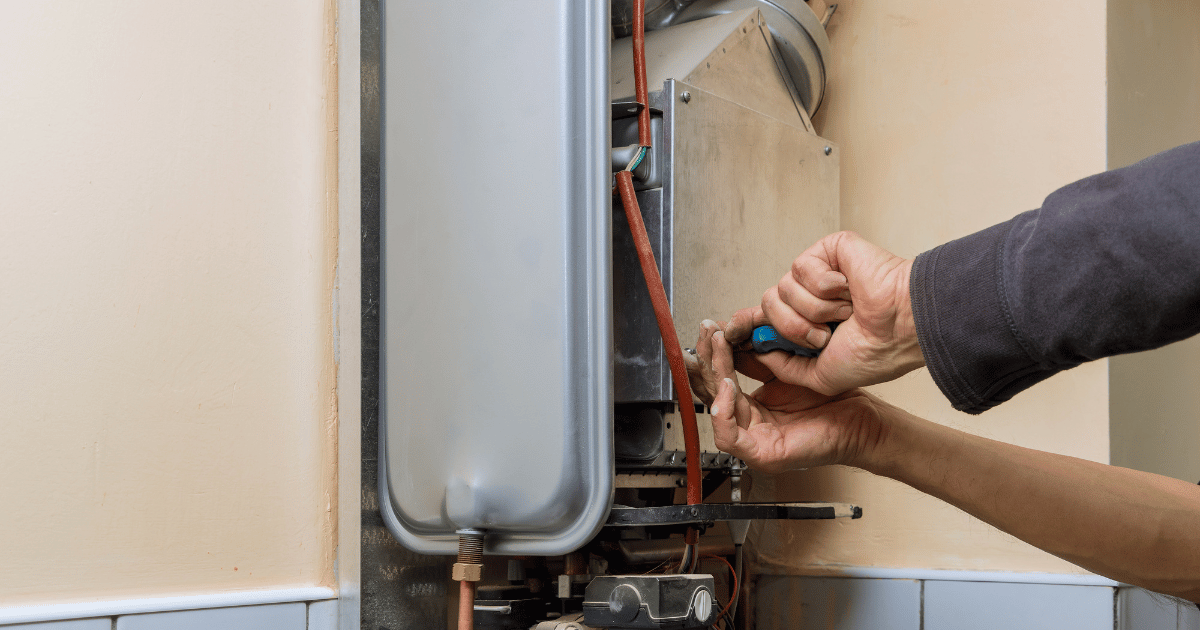Step-by-Step Steps to Maintaining Your Home's Hot Water System
Step-by-Step Steps to Maintaining Your Home's Hot Water System
Blog Article
Listed here on the next paragraphs you will discover additional good quality advice in regards to Tips on Maintaining a Water Heater.
:max_bytes(150000):strip_icc()/how-to-drain-a-water-heater-2719055-hero-35f0548b0f1f42f0b13ba96a33ab8da2.jpg)
Hot water is necessary for everyday comfort, whether it's for a rejuvenating shower or washing meals. To ensure your warm water system runs successfully and lasts longer, regular upkeep is key. This post offers sensible pointers and understandings on exactly how to keep your home's warm water system to stay clear of disturbances and pricey repair services.
Introduction
Maintaining your home's hot water system might seem daunting, however with a couple of straightforward actions, you can guarantee it operates efficiently for several years to come. This overview covers whatever from recognizing your warm water system to do it yourself maintenance pointers and understanding when to contact professional aid.
Value of Maintaining Your Warm Water System
Regular upkeep not just prolongs the lifespan of your warm water system however additionally guarantees it operates efficiently. Neglecting upkeep can cause decreased performance, higher power bills, and also early failure of the system.
Signs Your Warm Water System Requirements Maintenance
Recognizing when your warm water system needs attention can protect against significant issues. Keep an eye out for signs such as irregular water temperature level, weird sounds from the heater, or corroded water.
Understanding Your Warm Water System
Prior to diving right into upkeep tasks, it's helpful to understand the fundamental elements of your hot water system. Typically, this consists of the hot water heater itself, pipelines, anode rods, and temperature level controls.
Monthly Upkeep Tasks
Regular month-to-month checks can assist catch minor problems before they intensify.
Purging the Hot Water Heater
Purging your water heater eliminates sediment buildup, enhancing effectiveness and lengthening its life.
Monitoring and Changing Anode Rods
Anode poles stop deterioration inside the container. Examining and replacing them when broken is essential.
Inspecting and Adjusting Temperature Setups
Readjusting the temperature level setups ensures optimum performance and safety and security.
DIY Tips for Maintenance
You can do a number of upkeep jobs on your own to maintain your hot water system in top condition.
Looking for Leakages
Regularly inspect pipelines and links for leakages, as these can lead to water damage and greater costs.
Testing Pressure Alleviation Valves
Examining the pressure relief valve guarantees it works properly and stops excessive stress build-up.
Shielding Pipelines
Protecting warm water pipes reduces warmth loss and can conserve power.
When to Call a Professional
While DIY maintenance is helpful, some issues require expert competence.
Complicated Concerns Requiring Expert Help
Examples consist of significant leaks, electrical problems, or if your hot water heater is consistently underperforming.
Regular Specialist Upkeep Advantages
Expert upkeep can consist of detailed examinations, tune-ups, and making sure compliance with safety criteria.
Verdict
Regular maintenance of your home's hot water system is crucial for performance, longevity, and price savings. By complying with these tips and recognizing when to look for professional aid, you can guarantee a trusted supply of warm water without unanticipated disturbances.
How to Maintain an Instant Hot Water Heater
Before tinkering with your hot water heater, make sure that it’s not powered on. You also have to turn off the main circuit breaker and shut off the main gas line to prevent accidents. Also turn off the water valves connected to your unit to prevent water from flowing into and out of the appliance. 2. When you’re done, you have to detach the purge valves’ caps. These look like the letter “T†and are situated on either side of the water valves. Doing so will release any pressure that has accumulated inside the valves while at the same time avoid hot water from shooting out and burning your skin. 3. When the purge valves’ caps are removed, you have to connect your hosing lines to the valves. Your unit should have come with three hoses but if it didn’t, you can purchase these things from any hardware or home repair shops. You can also get them from retail stores that sell water heating systems. Read the user’s manual and follow it to complete this task properly. When the hosing lines are connected, open the purge port’s valves. 4. You should never use harsh chemical cleaners or solutions when cleaning your unit. Make use of white vinegar instead. It should be undiluted and you’ll probably use about 2 gallons. 5. Now flush your water heater. This task should probably take about 40 minutes. We can’t give you specific directions for this because the procedure is carried out depending on the type, model and brand of your heater. With that being said, refer to the user’s manual. 6. When you’re done draining the unit, you have to turn off the purge port valves again. Remove the hosing lines that you earlier installed on each of the water valves. Put the valve caps (purge port) back in their respective places and be very careful so as not to damage the rubber discs that are found inside these caps. 7. Now that everything’s back in place, check your user’s manual again to find out how to reactivate your water heating system. 8. Once it is working, turn one of your hot water faucets on just to let air pass through the heater’s water supply pipes. Leave the tap on until water flows smoothly out of it. https://www.orrplumbing.com/blog/2014/september/how-to-maintain-an-instant-hot-water-heater/

I recently found that content about How to Maintain a Hot Water Heater in a Few Simple Steps while doing a lookup on the internet. In case you enjoyed reading our page if you please be sure to pass it around. Thanks for your time invested reading it.
Call Today Report this page